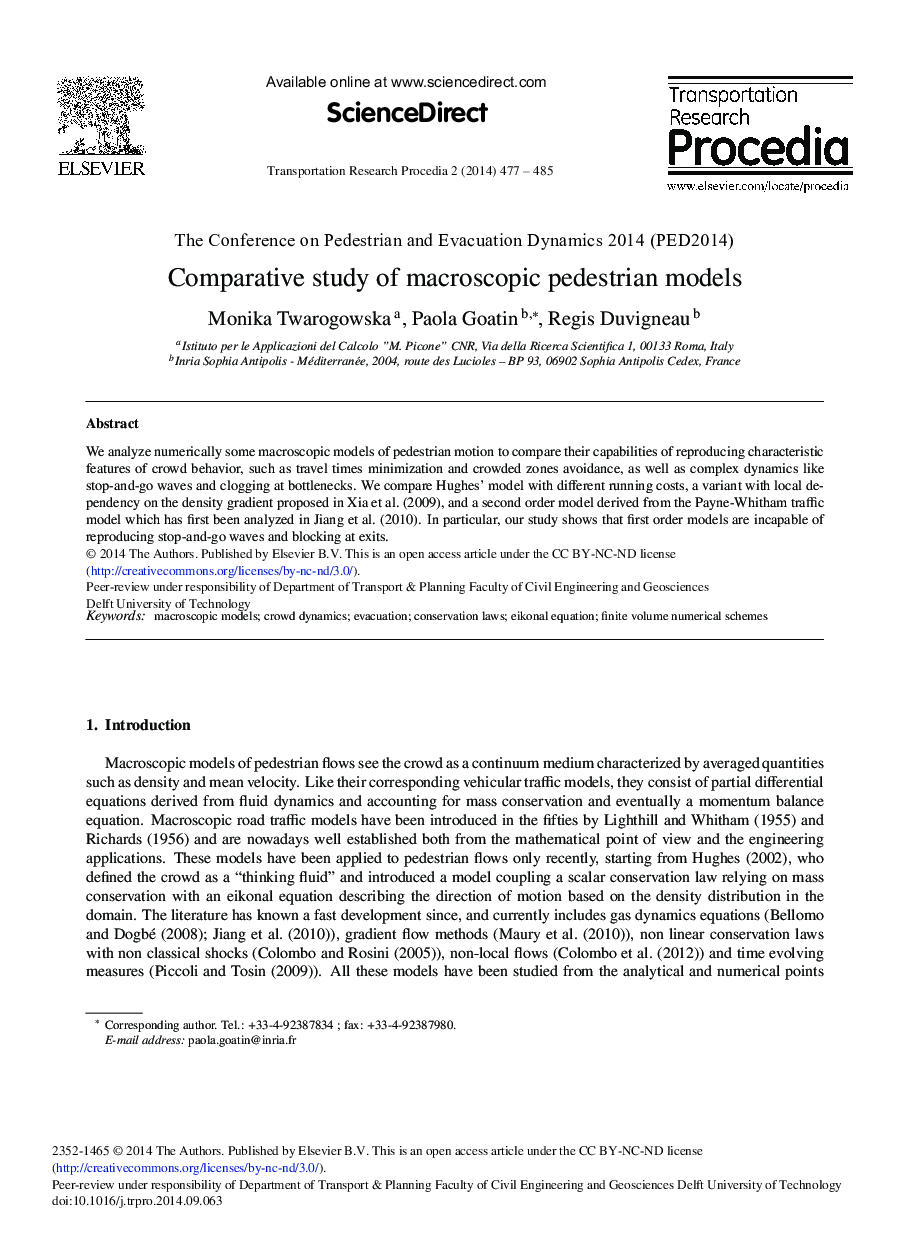| Article ID | Journal | Published Year | Pages | File Type |
|---|---|---|---|---|
| 1106720 | Transportation Research Procedia | 2014 | 9 Pages |
Abstract
We analyze numerically some macroscopic models of pedestrian motion to compare their capabilities of reproducing characteristic features of crowd behavior, such as travel times minimization and crowded zones avoidance, as well as complex dynamics like stop-and-go waves and clogging at bottlenecks. We compare Hughes’ model with different running costs, a variant with local dependency on the density gradient proposed in Xia et al. (2009), and a second order model derived from the Payne-Whitham traffic model which has first been analyzed in Jiang et al. (2010). In particular, our study shows that first order models are incapable of reproducing stop-and-go waves and blocking at exits.
Related Topics
Social Sciences and Humanities
Social Sciences
Safety Research
